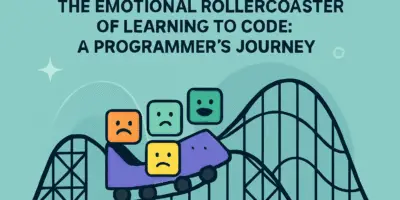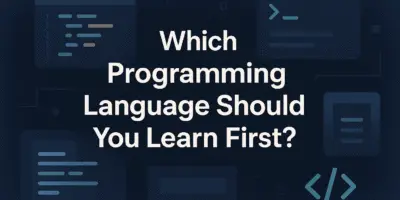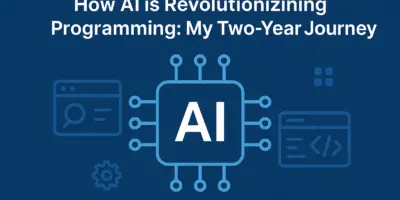Remember all those hours you spent learning to code? The countless nights debugging on Stack Overflow? Well, I hate to break it to you, but that might all be unnecessary now. People are building entire applications without writing a single line of code. They’re literally talking to AI like it’s their employee, getting it to do everything they need – and no, this isn’t science fiction or some distant future prediction. It’s happening right now.
Welcome to the world of “vibe coding.”
If you’re hearing this term for the first time (or even if you’ve heard it before), your perspective on coding is about to change dramatically. So buckle up – this is going to be either mind-blowing or anxiety-inducing. Maybe both.
Table of Contents
What Exactly is Vibe Coding?
The term “vibe coding” emerged completely by accident. In February last year, Andrej Karpathy (one of the influential figures at OpenAI) posted on X (formerly Twitter) about his new hobby. He had no idea he was coining a term that would soon become mainstream.
So what did he say? Essentially, Karpathy described a new approach to coding where you just “vibe” and go with the flow. Your mind is clear and relaxed – you’re just vibing while forgetting that code is even being written. He mentioned working on a web app without feeling like he was writing code at all – just looking at things, saying things, copying and pasting things, and somehow, everything just works beautifully.
To understand vibe coding properly, you need to know that while the term is new, the technology behind it isn’t entirely fresh. It’s been around for a few years since the emergence of AI models like ChatGPT and Gemini. We’ve been using these models to complete our code, find bugs, or write specific functions – but we weren’t calling it “vibe coding” then.
What really sparked the vibe coding explosion was the emergence of specialized coding tools. Unlike general AI models where you’d chat about anything (coding included), these new tools are built specifically for coding, like GitHub Copilot and Cursor. They’re not just responding to your questions or completing small snippets – they’re embedded right in your code editor and can write entire applications for you.
How Vibe Coding Works
Imagine this: you’re using tools. You start talking to the AI model about your project, describing what you want in detail. You’re basically treating the AI like an employee you’re assigning tasks to. The AI handles everything for you – both on its web app interface or in your local code editor – while you just review the final result and request changes until you get what you want.
But wait – isn’t all AI-assisted coding considered vibe coding? Not quite. To truly “vibe code,” you need to completely take your hands off the wheel and let the AI do absolutely everything. If you’re just asking AI to write a few lines of code, complete a function, or automate a small section – that’s just regular coding with AI assistance. It’s not the full vibe coding experience.
When Should You Use Vibe Coding?
There aren’t rigid rules for vibe coding – it’s literally about the vibe, after all. You can theoretically use it for anything, but the real question is: should you use it for everything?
Definitely not. That could be disastrous.
Projects suitable for vibe coding need to have low stakes or minimal risks. Ask yourself:
- If there’s a bug or vulnerability in this AI-generated code, could it harm someone?
- Could it damage my business reputation?
- Could it cause financial losses?
If you answer “yes” to any of these questions, vibe coding shouldn’t be your approach for the entire project. You might still use AI to assist with specific parts, but having the AI write the entire codebase would be risky.
This became painfully clear when someone created a SaaS application using vibe coding and proudly shared it on X. Cybersecurity experts quickly descended on his project, identifying numerous vulnerabilities and security flaws in the AI-generated code. The creator later had to defend himself, saying, “Look, I never claimed to be a specialist or coder. I was just playing around with AI tools, created something I enjoyed, and shared it with you all. It’s just like sharing a photo.”
The development community tends to amplify concerns, especially when new technologies emerge. So, to boil it down: vibe coding is quick and convenient, but use it only for safe projects that won’t harm anyone, and always keep security, privacy, and costs in mind.
Best Practices for Vibe Coding
While the whole point of vibe coding is to be free-flowing and relaxed, there are still some approaches that work better than others:
- Start with simple requests. Don’t overcomplicate things for the AI right off the bat. Begin with something like, “Create a weekly task planner app,” period. After the AI produces an acceptable initial version, you can gradually add more features one by one. I’ve tried giving it all the requirements at once, and the results weren’t great.
- Give clear instructions. There’s a programming rule that says when working with a programmer, never let them imagine what you want. You must describe exactly what’s in your mind in detail. The same applies to AI. The clearer you are in your prompt, the more accurate the result will be. Tell it what each button should do, specify input fields and their types, explain any conditions (like “if the user does X, the app should do Y”).
- Test all scenarios. Quality assurance is a crucial part of any development team. They take your application and try to break it piece by piece to find issues. With vibe coding, you need to do the same. When the AI produces a version, test it thoroughly – try normal usage scenarios and unusual ones that might not occur to most people. If something doesn’t work, don’t just say “this isn’t working.” Explain how you want it to work or what you expected versus what you got.
- Be patient. Vibe coding is fast, but it’s not magic. You probably won’t get exactly what you want on the first try. I once wrote on Facebook that sometimes while vibe coding, I get so frustrated that I think, “I would have been less annoyed if I had just written the code myself!” So keep your patience and remember that iteration is part of the process.
But What About Professional Developers?
The eternal question: if everyone can vibe code and create applications and websites, what will happen to programmers? Will they be selling milk instead?
Let me explain this with food, a language we all understand. If I get a quick meal that goes in the microwave for five minutes and comes out ready to eat, yes, I’ve eaten and I’m full. But does that eliminate the need for a skilled chef?
Just because I can make instant noodles to satisfy my hunger doesn’t mean I don’t need a chef to prepare an amazing recipe.
If you understand programming, you can use vibe coding as a turbo boost to get things done quickly instead of building everything from scratch. But it’s hard to get something from it that’s very solid, secure, and easy to modify later. At least in its current state, vibe-coded projects often aren’t modular or optimized – look behind the scenes at the code and you’ll find a mess.
If you’re learning a programming language or technology, keep learning. Just add these tools to your arsenal as a turbo boost – something that accelerates your learning pace and shows you examples of how things are done. But you still need to understand the fundamentals well.
The difference now is that the skilled programmer isn’t just someone who can write correct code by hand, but someone who can harness AI to produce good code and functional products professionally while understanding the code’s context and how to fix things when they inevitably break – which happens quite often.
In Conclusion
Vibe coding can turn your random idea that pops into your head while you’re doing nothing into a working reality very quickly. But it won’t turn it into a robust, secure project. And if you’re building something complex with data involved, vibe coding might leave you stranded.



